While the Old Norse sea-raiders we call Vikings were mostly known for their brutal raids and forceful settlements around the European continent, they also achieved many arguably impressive feats during their heyday. Some of these came in the form of epic journeys to the edges of the known world, the likes of which would not be seen again for more than 500 years.
So which of the Vikings made the biggest splash throughout history? Turns out that was a fairly hard question that not many had tried to answer. So naturally, I set out to find and summarize a decent list of the Norsemen (and women) who had the most impact on their peers as well as our modern-day societies and cultures.
In other words: here are the 33 greatest and most famous vikings of all time, and their adventures and conquests.
ℹ️ Many of these stories have been documented and verified through independently written sources, and we can be pretty certain about their authenticity. But some of them are primarily based on the Old Norse Sagas that were written down at least three centuries after the events they describe, so they should be taken with a grain of salt (as historians mostly do when they refer to them).
Cnut the Great

As the conquering King of England, Denmark, and Norway, Knútr (a.k.a. Knud, Knut, Canute, Cnut) is without a doubt one of the most influential Vikings in history, establishing a Norse rule in the North Sea for the first and only time in history.
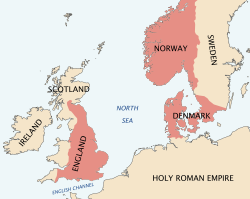
So why was Knud such a successful and infamous viking? Let’s take a look at his life:
In 1013 the 16-18 year-old Knud joined his father King Sweynn Forkbeard on Viking raids in England, and after Sweynn was killed in battle, his army appointed Knud as the new King before they returned to Denmark in 1014.
Upon returning Knud found his brother Harald had swooped in on the throne, which he allowed in exchange for Harald building him a fleet to invade England and avenge their father’s death.
This invasion materialized in 1015 when he was joined by Erik the Earl and Thorkell the Tall, and slowly took over England, piece by piece.
The English King Ethelred died during the siege of London in 1016, and after his son Edmund managed to repel the Viking army, the two Kings decided to negotiate.
Somehow (ahem) Knud emerged from the meeting as the only living King, and was confirmed as King of all of England by the council of bishops, earls, and ealdormen — who all feared a destabilized England as the other alternative.
After his brother Harald died and Knud later invaded Norway, he could call himself King of England, Denmark, and Norway, ruler of a North Sea empire the world had not seen before or since.
Ragnar Lothbrok
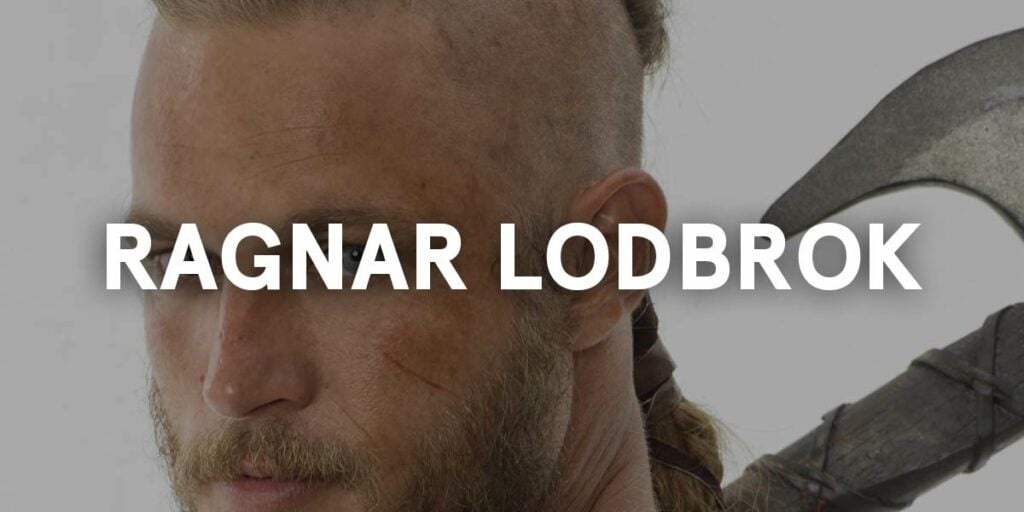
Ragnar Lodbrok is without a doubt one of the most famous Vikings of all time, and would’ve likely ended up as #1 if it wasn’t for the fact that he did not succeed in taking England (as Knud did).
Nonetheless, Ragnar was a legendary Viking hero whose legacy has been immortalized in numerous sagas (The Saga of Ragnar Lodbrok, The Tale of Ragnar’s Sons, and Ragnarsdrápa) passed down through oral tradition from generation to generation, as well as more modern takes such as the wildly popular (but not entirely historical) Vikings tv series.
According to the Sagas, Ragnar was born in the late 8th century and became King of Sweden in the early 9th century after succeeding his father, King Sigurd Ring (who by the way serves as the inspiration behind Lord of the Rings, among many other tales).
He was likely a fierce warrior and skilled navigator who is credited with having raided England, France, and other parts of Europe during the 9th century. Ragnar also fathered several famous Viking kings and warriors, including Halfdan Ragnarsson, Ivar the Boneless, Sigurd Snake-in-the-Eye, and Björn Ironside (most of whom would invade England with the Great Heathen Army, to avenge their father’s death).

Through his many exploits and the massive legacy he left behind, Ragnar has become one of the most famous and talked-about Vikings of all time, not the least because of the many Old Norse sagas portraying his exploits.
And in recent years there’s of course the hugely popular Vikings series that is loosely based on the Viking sagas revolving around Ragnar’s life.
The legend of Ragnar Lothbrok is for sure one of the most well-known Viking stories, but it’s important to understand that a lot of the sources are semi-legendary at best, making it extremely hard to verify the events and people associated with Ragnar.
Some historians believe that Ragnar was a real person, while others claim that he was a composite character based on several different Viking kings. Whatever the case, it’s an amazing tale of amazing feats, which is still told to millions of people to this day.
Rollo (Göngu-Hrólfr)

Rollo (Hrólfr), possibly also known as Rollo the Walker (Göngu-Hrólfr) due to his size preventing him from riding most horses, was a Viking who became the first Duke of Normandy, founding father of the Normans, and whose descendants would sit on the thrones of England, Ireland, Sicily, and Antioch for many centuries after his death.
He was without a doubt one of the Vikings who left the strongest legacy, and who paved the way for so many others that are etched in the halls of history. As a testament to this, his exploits are still remembered more than 1,000 years later, and his descendants still “rule” over England to this day.
Rollo was the son of a Viking chieftain, who was apparently killed in battle. After this, it’s told that Rollo sought revenge by killing all the Saxons he could find. He eventually left his home and went raiding the North Sea coast, and up the Rheine as far as Paris.
In Paris, Rollo met the French King Charles the Simple. Charles was tired of raiding Vikings and apparently very much impressed by Rollo’s strength and bravery, so he offered him many riches if he would become his ally and repel any future Viking raids.
Rollo accepted the offer and married Charles’ daughter, and happily ruled over Normandy for the remainder of his life. Normandy was however not enough for Rollo’s great-grandson, William the Conquerer, whose ambitious feats made him the first Norman King of England, and whose descendants still sit on the throne today.
Rollo died sometime after 1034 or 1035. His body was allegedly buried at Fécamp, but his tomb has not been found.
Erik "the Victorious" Segersäll
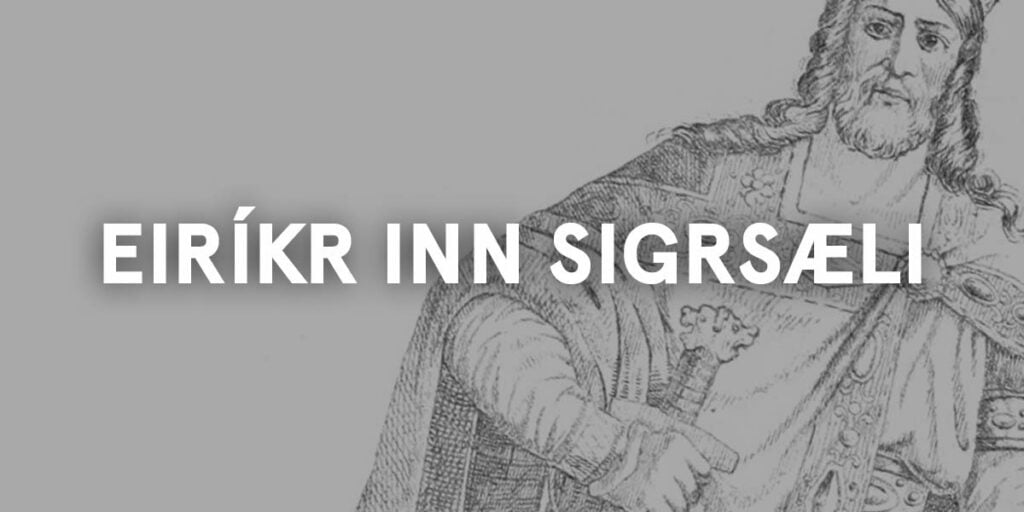
The first Swedish king who ruled over Svealand, Västergötland, and Östergötland (the three main regions that made up the core of medieval Sweden, thereby making him the first Swedish King in the more modern sense) was a great Viking in every way possible.
Erik started his reign by utterly defeating his unruly nephew Styrbjörn Starke in the three-day long Battle of Fýrisvellir, which earned him his epithet “the Victorious”.
After this, he invaded and defeated Sven Forkbeard’s Denmark as well, forcing Sven to eventually flee to England. Erik likely ruled over Denmark in addition to Sweden until his death, and he even seems to have converted to Christianity while in Denmark (which was Christianized before Sweden).
This was likely a short-lived conversion though, as he by all accounts proceeded to invade and raid the Christians in Saxony while he resided in Denmark, and many sources mention increased Viking activity in Northern Germany as a whole during Erik’s reign.
On top of this, he converted back to the Old Norse religion upon returning to his native Sweden.
Leif "the Lucky" Eriksson
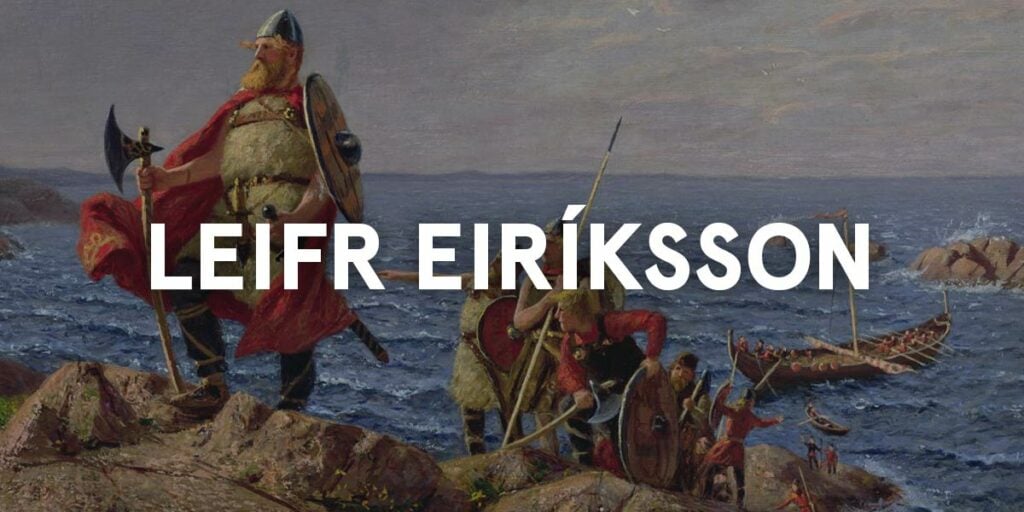
Leif “the Lucky” Eriksson is one of the most famous and renowned Vikings of all time. He is believed to be the first European to set foot in North America, more than 500 years before Christopher Columbus.
Eriksson was born around 970 AD in Iceland, the son of Erik the Red and his wife Thjodhild. As you may already know, Leif’s father Erik was also a Viking explorer; founding the first Norse settlement in Greenland.
Leif also had a sister, or possibly half-sister, named Freydis, who you’ll get to know a bit more further down this list.
By all accounts, Eriksson was an accomplished Viking and a skilled shipbuilder and navigator. He is known to have sailed in Greenland, North America, and possibly even as far as the east coast of modern-day New England, USA.
According to the tales, Leif and his crew sailed westwards from Greenland in 999 CE after having heard tales of a new land by other explorers (such as Bjarni Herjólfsson who sailed there in 986 CE but never landed). They landed on the eastern coast of North America, where they at some point founded a settlement called Vinland (believed to be located at L’Anse aux Meadows, Newfoundland).
Archeological evidence also supports the existence of a Viking settlement at L’Anse aux Meadows, as researchers have found plenty of Viking artifacts and remaints around the area. The evidence includes turf walls, a forge, and a boat landing and has according to a 2021 study published in Nature been dated to 1021 AD (which suggests that it likely wasn’t established by Leif Eriksson on his first voyage).
The Vinland settlement fell apart some time after Leif’s death, and there is no record of it ever being re-established (though Norse sea-farers were thought to have explored the east coast of North America for up to a hundred years after).
Many of the artifacts found at the site at L’Anse aux Meadows are on display at The National Museum of Denmark in Copenhagen today, including a sword and other tools made from American-sourced copper.
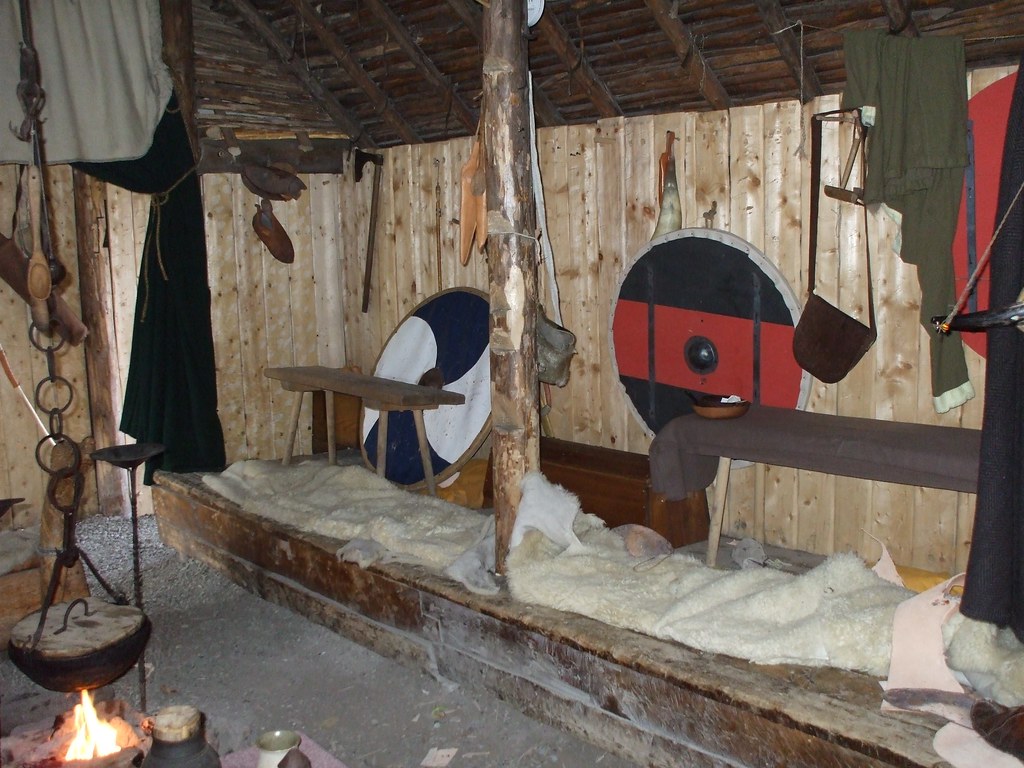
This checks out according to the Vinland sagas, which admittedly are not always considered reliable sources.
The Vinland Sagas are a collection of Norse sagas relating to the exploration of North America by Norsemen, including Leif Eriksson, prior to the voyages of Christopher Columbus and other later European explorers.
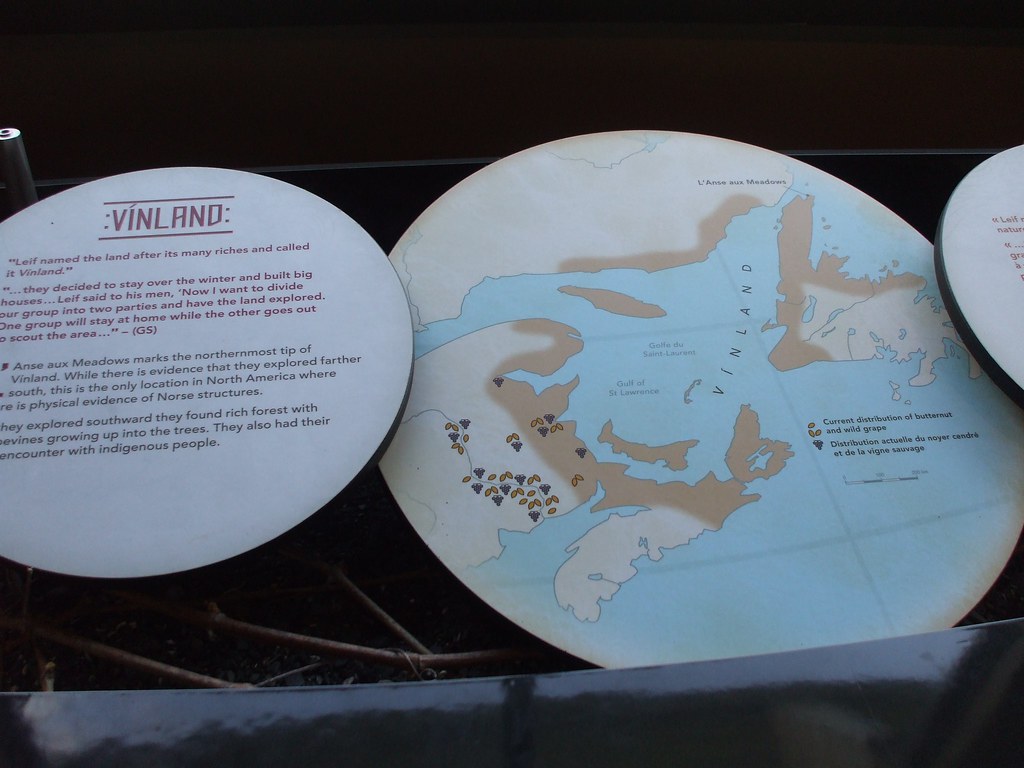
The most famous of the sagas is the Grœnlendinga Saga, which tells of the exploits of Erik the Red and his son Leif Eriksson in their exploration of Greenland and Vinland, respectively. The sagas also describe the encounters between the Norse and Native Americans.
The natives (called skrælingar by the Norse) were not surprisingly described as hostile to the Norse settlers, and likely also killed Leif’s brother Thorvald. They were described as living in houses made from wood and thatched roofs, and wore clothes of animal skins.

The Leif Eriksson statue at L’anse aux Meadows (shown above) was built in 2013, and is located on a hill overlooking the Vinland site in Newfoundland, Canada.
The memorial includes an exhibit about the settlement at Vinland. While the Vinland sagas are a major part of Norse mythology, the truth behind them is unknown.
Want to read more about Leif Erikson? I’ve written an article where I dive deeper into his life and all of his adventures if you’re interested:
Sven Forkbeard
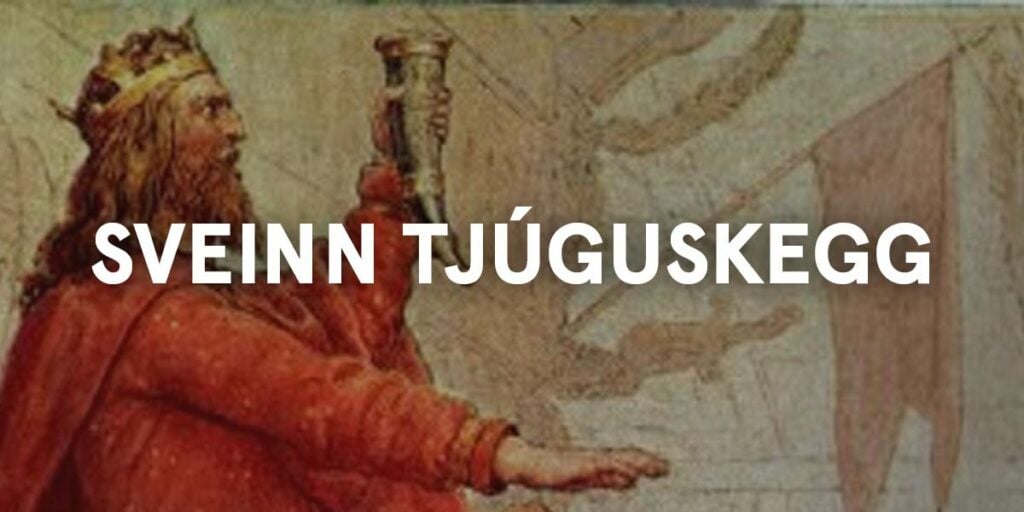
Sven Forkbeard was a Viking king who ruled Denmark, Norway, and England during different periods between 986 and 1014. He was the son of Harald Bluetooth, the first Christian king of Denmark, and his mother was Sigrid the Haughty, a powerful Swedish noblewoman.
Sven was a successful military leader who conquered Norway and England, and his son Cnut the Great eventually became king of a North Sea empire spanning across Denmark, England, and Norway.
Sven was born and raised in a turbulent household; his father was constantly at war with neighboring kingdoms and had according to Emma of Normandy (a descendant of Rollo, by the way) nothing but hatred towards his son.
In 986, his father was overthrown by his rebellious subjects, and Sven and his brother Harold were forced to flee to England. There they joined their uncle, King Edward the Confessor, who made Sven a ealdorman (an Anglo-Saxon nobleman).
As such, in 993 Forkbeard led a rebellion against his father and seized the throne of Denmark. He then turned his sights on Norway, which he invaded in 1000. He also managed to become the first Danish King of England in 1013.
Björn Ironside
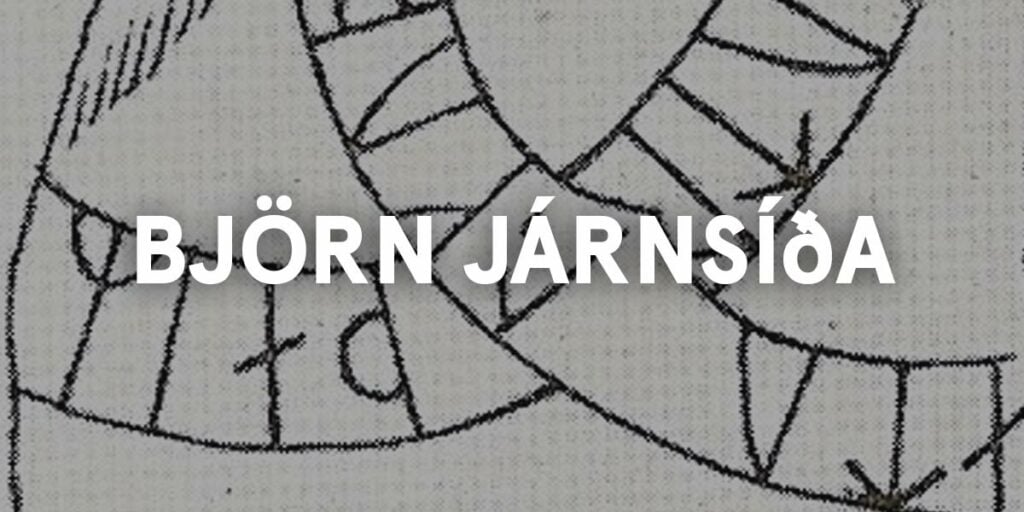
Björn Ironside (Old Norse: Bjǫrn Járnsíða, Swedish: Björn Järnsida) was a Viking king and according to 12th- and 13th century Icelandic sources, the son of the legendary Ragnar Lodbrok. Björn is mentioned in the sagas as a great warrior who fought fiercely and withstood sword and axe blows as if his sides were made of iron, hence the nickname “Ironside”.
Björn was also described as a great king, and the founding father of the House of Munsö who ruled Sweden up until 1060.
According to Frankish sources such as Annales Bertiniani and the Chronicon Fontanellense, Björn was sent out to build himself a reputation when his father Ragnar Lodbrok ascended the Swedish throne, as was customary in the Old Norse world.
Björn did make a name for himself, including from campaigns in Francia and the Mediterranean.
A popular tale recounts how Björn and his men raided the monastery at Monte Casino in 869. They took away a large amount of booty, including wine, silver and gold as well as relics.
Erik the Red
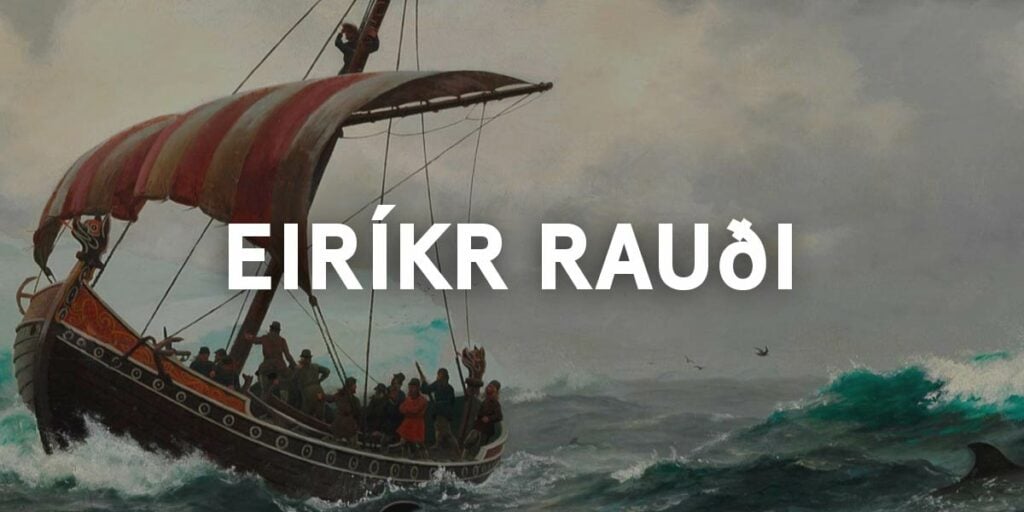
Erik Thorvaldsson (a.k.a. Erik the Red) was born in Norway 950 CE to Thorvald Asvaldsson and his wife, Thjodhild. Through the misdeeds of his father, the family was banished from Norway to Iceland when Erik was still young. In keeping up with family tradition, Eric was in turn also banished from Iceland after being accused of manslaughter in 982.
This time he couldn’t go further west, as there wasn’t really anywhere else to go that people knew of at the time. But, according to legend he sailed westward in search of new land anyway, perhaps because of how desperate he was to leave Iceland behind.
He is believed to have discovered Greenland in 982 AD, and named it “Greenland” in order to entice settlers to the frozen land. Erik’s ploy worked, and many Norsemen eventually relocated to Greenland, where they established settlements and farmed the land.
Erik and his family were the first permanent settlers of Greenland, and they initially lived in a settlement on an island off the coast of present-day Nuuk, called Brattahlid. He was the first known European to explore and map the coasts of Greenland, which were often marred by icebergs and at the time seen as uninhabited.
The Norse settlements in Greenland thrived for centuries, until they were ultimately destroyed by climate change and the incoming Inuit people who had come from North America (and still live there today).
He was nicknamed “the Red” due to his red hair and beard, and was a very skilled navigator who was part of a select few who were able to traverse the treacherous waters of the North Atlantic Ocean.
Traditional legend says that Erik the Red was a descendant of the mythical hero Volsung and his wife Signy.
Harald Fairhair

Harald Fairhair was a king of Norway who, according to legend, united the country in the 9th century – transforming it from being nothing but a number of squabbling tribes to becoming a united and powerful kingdom.
He is considered the first king of Norway, and his rule is sometimes referred to as the beginning of the Norwegian monarchy.
Although there is no concrete evidence that Harald actually existed, many historians believe that he was a real person and that his reign marked an important turning point in Norwegian history.

In 882, Harald became the sole ruler of Norway. He was married to Ragnhild (Ragnhildr), daughter of King Hardecnut of Denmark, but also had children with other women. All in all, Harald had five confirmed sons: Eric Bloodaxe (by Ragnhild) Håkon the Good (by Tora Mosterstong from Moster, Sunnhordland, Norway) Ragnvald, Bjørn, and Halvdan.
It should be noted that there is no contemporary support for the claims of later sagas about Harald Fairhair, and that the modern-day academic debate on Harald’s story is split between two sides:
One that maintains that Harald Fairhair’s Icelandic and Norwegian historiography is a part of a mythical reconstruction of the origin of Iceland.
And the other that believes Harald Fairhair was in fact based on a historical king who ruled Vestlandet and whose name was definitely Harald (but perhaps not Fairhair).
Harald Bluetooth
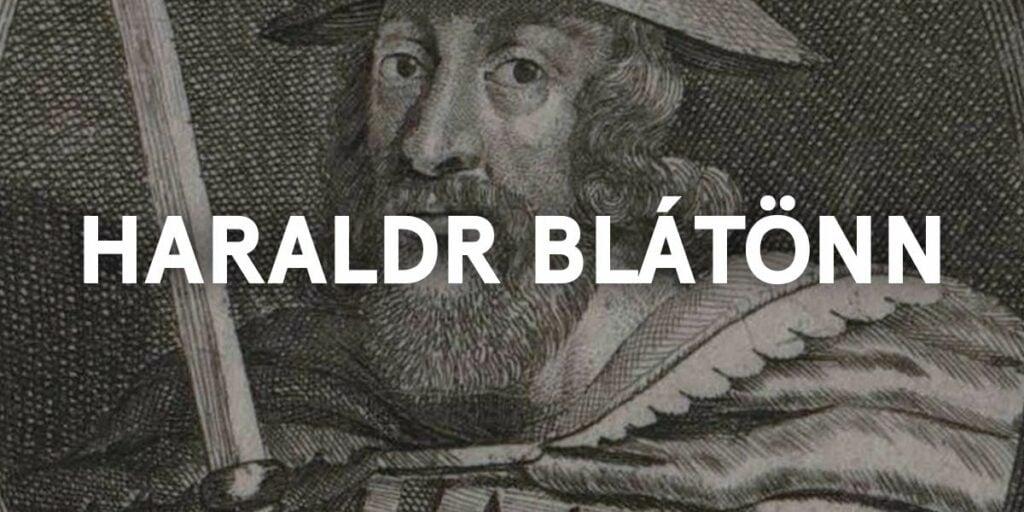
Harald Bluetooth was one of the most famous and successful Viking kings; born in the late 9th century, king of Denmark in 958 CE, and King of Norway in 970 CE.
He is best known for his attempts to unite Scandinavia under one ruler, and in recent times for giving his name to the Bluetooth wireless technology developed by Swedish tech company Ericsson.
Harald Bluetooth was a skilled warrior and strategist, and he successfully united large parts of Scandinavia and the North Sea coast under his rule. He also strengthened Danish law and culture during his reign. However, he met with resistance from some of the other Scandinavian kings, and eventually lost control of Norway.
In addition to his military achievements, Harald Bluetooth is also credited with introducing Christianity to Denmark and helping to develop the first form of written Danish language.
He also seemed to have a strategic mind, having the foresight to ally himself with the Holy Roman Emperor against the Magyars, and strengthening diplomatic ties with England and France. Perhaps his most impressive achievement, however, was building a network of roads and bridges that allowed for safe travel and trade throughout his kingdom.
After a long and successful reign, Harald Bluetooth died in 985 AD.
Rurik

Rurik was a Varangian (or simply put a Swedish Viking) prince who led a group of Norsemen to an area in modern-day Belarus, Ukraine, and Russia in the late 9th century – from which they launched raiding parties, traders, and diplomats to all corners of the known world.
The Varangians started to be called the Rus, and their dominion Kievan Rus, which is where Rurik and his descendants laid the foundation to the Russian state (although the modern-day Russian government is desperatly trying to erase this link in an attempt to distance themselves from their Nordic forefathers).
The Rurik dynasty of Rus’ went on to rule Russia until 1612, when Tsar Vasily IV became the last Rurikid to rule as Tsar of Russia. Descendants of another Tsar (Ivan the Terrible) chose to join their mother Anastasia’s dynasty, and went on to become the famous Romanovs who then ruled until the Soviet revolution ended the age of Tsars.
From the Ukrainian, Belorussian, and Russian lands, the Rurik dynasty and the Kievan Rus raided Byzantine territories in the East and established trade relations with the Abbasid Caliphate. In 907, they even sacked the city of Constantinople, capital of the Byzantine Empire.
Rurik has been credited with introducing both Norse paganism and the Old Norse language to Ukraine and Russia, and while his historicity is uncertain, Rurik is generally accepted to have been a real person and the founder of both the Ukrainian and the Russian state.
Among his most famous feats is his conquest of Ladoga and Novgorod, and his aforementioned military campaigns against the mighty Byzantine Empire.
As a leader, Rurik was known for his intelligence, strength, and courage, and he is credited with bringing stability to Russia during a time of political turmoil.
He is also remembered for his patronage of arts and culture, and for his efforts to promote Christianity in Russia.
Ivar the Boneless

Ivar the Boneless might be one of the most famous Vikings, but if we want to get technical he wasn’t really a Viking per se. He was born around 850 CE to Ragnar Lodbrok and Aslaug as a cripple, unable to stand or move his legs due to a birth defect, so he was unable to fight like other Viking men.
However, that didn’t stop him from becoming one of the most feared and respected Norse warriors of his time, which makes his accomplishments even more impressive.
The main reason Ivar went on to be remembered for thousands of years, was likely because he was extremely smart and cunning, and he often came up with clever strategies that helped him win battles when his legs and strength could not. He also had a fierce determination and was allegedly never afraid to take on any challenge.
In 865 CE, Ivar and his brothers commanded the Great Heathen Army’s invasion of England, to avenge their father’s disgraceful death to King Ella of Northrumbria (mentioned further up on the list).
Ivar and his brothers were victorious at the Battle of Ashdown in 871 CE, and would proceed to carve out a large part of the British Isles under Norse rule (which came to be known as Danelaw).
Ivar the Boneless is also assumed to be identical to Ímar, the founder of the Uí Ímair dynasty. His descendants would rule Northumbria and dominate the Irish Sea region, founding the Kingdom of Dublin and most Irish cities that still exist today.
Ivar died around 873 CE, but his legacy lives on without a doubt.
Valdamarr (Vladimir the Great)
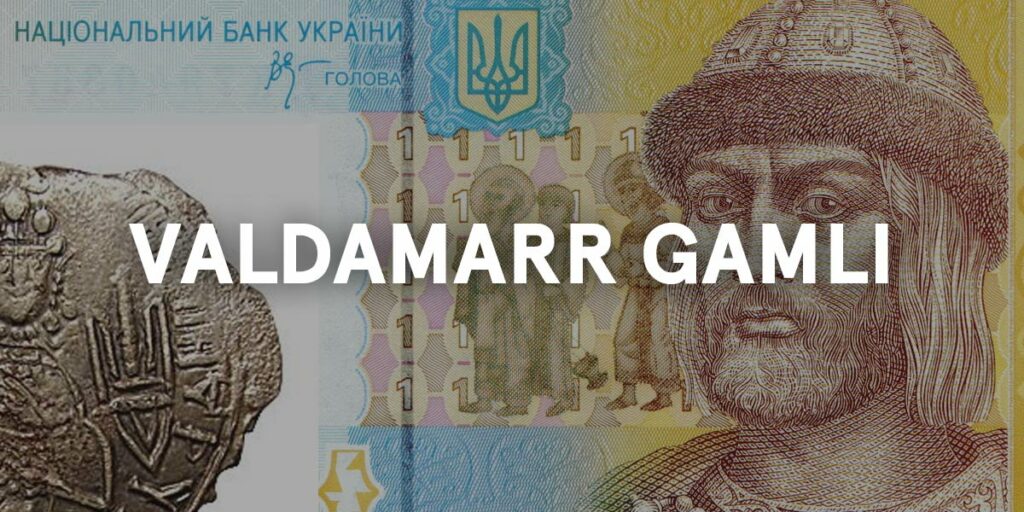
Vladimir, or Valdamarr as he was called in Scandinavia, is known for having consolidated the Rus’ (i.e. the Vikings who headed east from primarily Sweden) realm spanning across modern-day Belarus, Russia and Ukraine, and all the way to the Baltic Sea.
He is also credited with Christianizing the Kievan Rus’ (as well as for being a hardcore pagan with “over 800 concubines” before converting).
When he was 14, Vladimir’s father died and his brother Yaropolk started murdering brothers to affirm his own rule of the Rus’. This resulted in Vladimir fleeing Novgorod to live with his Scandinavian relatives in Sweden, where he would plot his revenge.
While in Sweden, Vladimir did the most Viking thing one could do and raised a great army of Varangians (i.e. primarily Swedish Vikings) with help from his Norse relatives. With this army, he set out to conquer and take control over the Rus’ from his murderous brother, and restored the honor of the Rurikid dynasty.
Vladimir’s insignia is still in use today as the coat of arms of Ukraine, and he is considered an integral part of the histories of both Ukraine and Russia.
The symbol is supposed to depict a diving falcon, and is also found in other places the Rurikids ruled over or had relations to (such as modern-day Russia, Sweden, and Norway).
Ingvar Vittfarne (Ingvar the Far-Traveled)
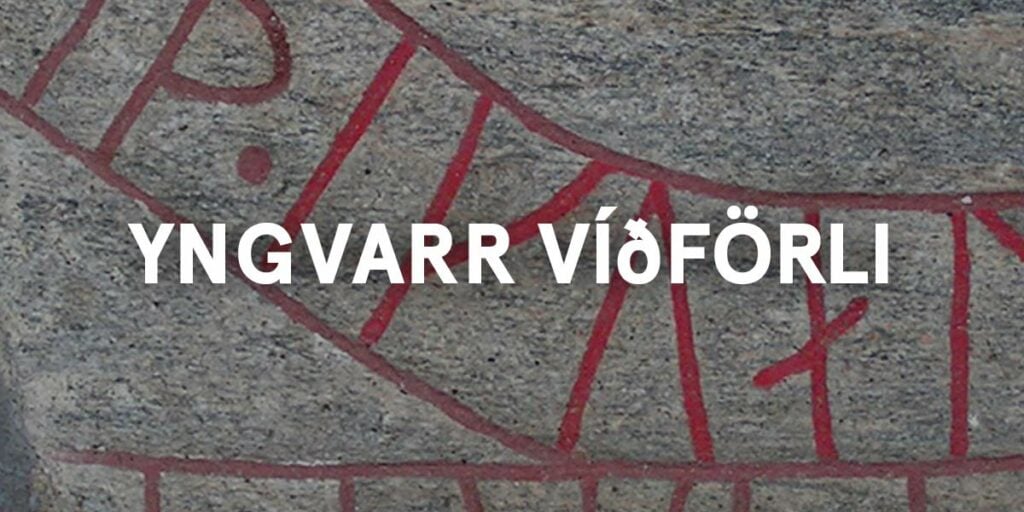
Ingvar Vittfarne was a Swedish Viking who raided the coast of the Black Sea in 1040 CE, and reached as far as the Caspian Sea east of Azerbadzjan.
This Viking expedition has been mentioned on 25 runestones, the so-called Ingvar stones.

His Viking party included some 3000 warriors and was described in Yngvars saga víðförla (also known as Sagan om Ingwar Widtfarne och hans Son Swen).

Hastein
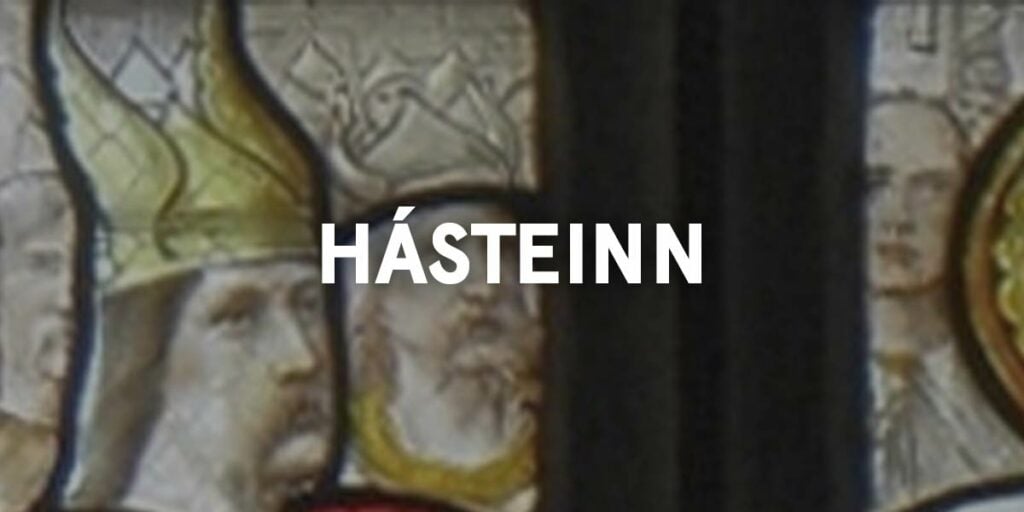
Haestein was a Dane once described as “the Most Horrible of the Viking Chiefs”, who raided in France and the mediterreanean (with Björn Ironside) among many other locations.
Based in Brittany, Haestein launched several raids upon the Frankish Empire, and eventually joined Björn Ironside when they took a fleet of 62 ships down the Loire to raid the Mediterranean coast.
During their raid of the city of Luna, Hastein — believing it was Rome — ordered his men to carry him to the church of the city and tell everyone he was going to convert to Catholicism.
Once inside, he was brought to the church, where he received the sacraments just before hopping down from his stretcher and sacking the city.
He went on to also sack the city of Pisa before finally returning to Brittany.
To get a better sense of who Hastein was, here’s how he was described by the chronicler and Picard monk Dudo of St. Quentin:
He has defiled nations, fleeing hither and thither; and he has claimed their wealth for himself and his followers. He has attacked a powerful lordship in Gaul; he has unlawfully appropriated the Frankish realm for himself. He has profaned the priesthood; he has tread in the sacristy. With words and deeds he has challenged the king of the Franks who, with his followers, has dolefully remained inside the cities. He rages around the walls of the garrisons as does a wolf around the pens of sheep. He accounts the Franks, withdrawn in fear within their garrisons, of slight value. He pursues them all, as a lion does stags. Whomever he meets, discovered distant from the garrisons, he butchers.
Dudo of St. Quentin’s. Gesta Normannorum. Book 1. Chapter 3.
Later in life, he focused on England, where he raided for years against King Alfred the Great and his son Edward.
As an old man he was described as “the lusty and terrifying old warrior of the Loire and the Somme“, and is described as one of the most notorious and successful Vikings of all time by many.
To wrap up the story of Haestein, here are some more choice words by our friend Dudo to describe Haestein:
This was a man accursed: fierce, mightily cruel, and savage, pestilent, hostile, sombre, truculent, given to outrage, pestilent and untrustworthy, fickle and lawless. Death-dealing, uncouth, fertile in ruses, warmonger general, traitor, fomenter of evil, and double-dyed dissimulator …
Dudo of St. Quentin’s. Gesta Normannorum. Book 1. Chapter 3.
Eric Bloodaxe
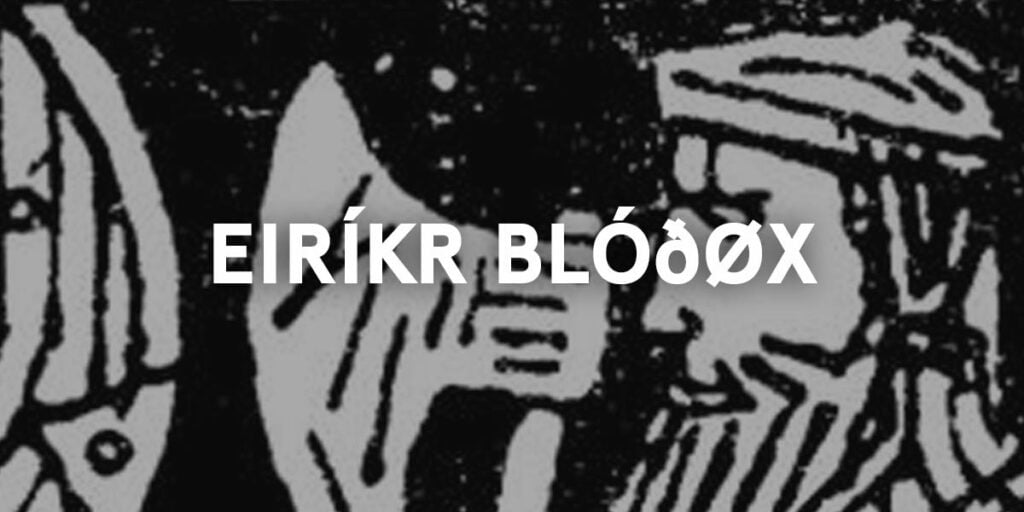
Eric allegedly first went out raiding at the ripe age of 12, and spent about four years raiding and pillaging the coasts of the Baltic Sea and the North Sea, including Denmark, Frisia, and Germany.
He proceeded to spend another four years raiding in Scotland, Wales, Ireland, and France.
According to the Sagas, Eric earned his epithet “Bloodaxe” when he slayed his half-brothers in order to rule Norway on his own (also earning him the nickname Eric “Brother-Bane”).
To top off a Viking life well-lived, Eric spent his later years raiding and exploring Lappland and Bjarmaland in modern-day Russia.
Helge (Oleg the Prophet)

Possibly a relative and definitely the successor of Rurik who invaded and took control of what the Vikings called Gardarikr (the predecessor of modern-day Russia), Helge (or Oleg as he was known in the east) continued the line of Rurik rulers that would rule over much of what is today Ukraine, Russia, and Belarus until 1598.
Helge was the supreme ruler of the Rus (the Swedish Vikings settling in and ruling over lands connected to the rivers in modern-day Ukraine, Russia, Belarus, and the Baltic states) from 882 to 912.
He ultimately seized power of Kiev which laid the foundation for the Kievan Rus’ powerhouse that came to dominate most of what is today western Russia, Belarus, and Ukraine.
Sigurd Ring
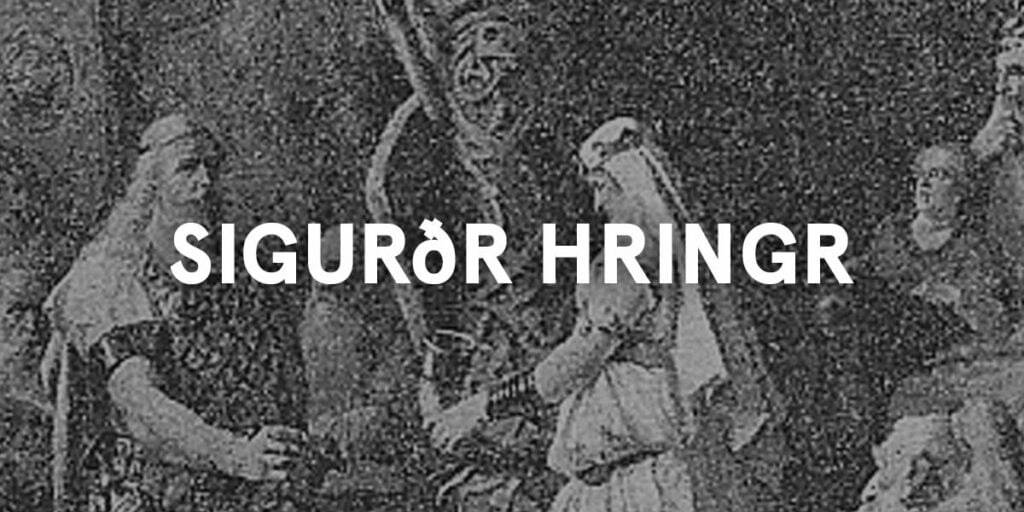
Father to Ragnar Lodbrok according to the sagas (i.e. not necessarily taken as historical fact). As a young man, Sigurd was crowned vassal King of Sweden under his uncle Harald Hildetand (Wartooth).
He ultimately rebelled against his uncle, and won the Battle of Bråvalla, where it is said Odin himself intervened on behalf of Sigurd. He became King of an independent Sweden, and was crowned King of Denmark as well eventually.
Later he fell in love with a young girl called Alvsol, who had five brothers intent on not letting him marry their sister. Sigurd proceeded to slay all five brothers but was mortally wounded himself, along with Alvsol who had taken poison to avoid being kidnapped (so she didn’t seem too keen either).
Sigurd threw the brothers and his girl onto a ship, set it on fire, jumped on himself, and finally threw himself on his sword as the fire raged around him.
Lagertha
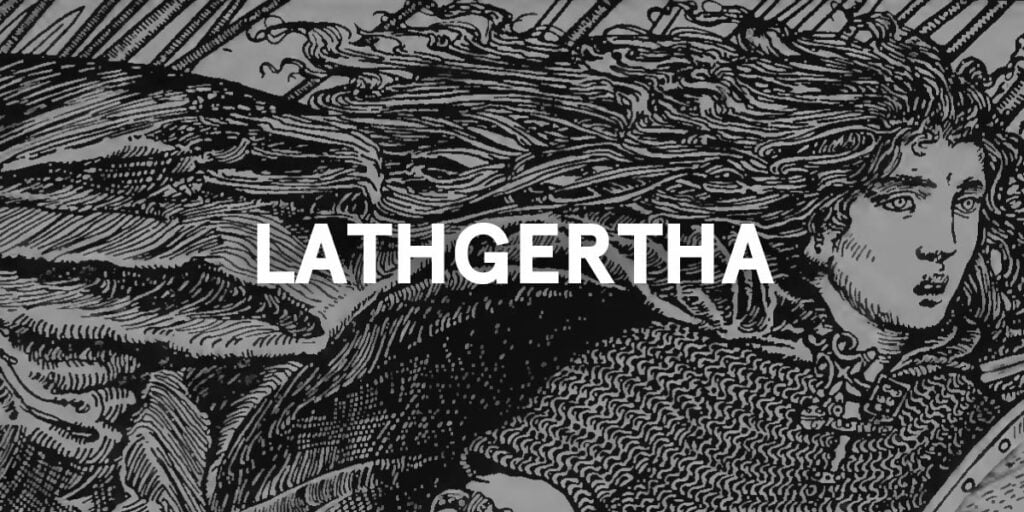
As the King of Sweden attacked Norway and slayed King Sigurd/Siward, the Norwegian king’s son Ragnar Lodbrok raced back to avenge his father, alongside a group of shieldmaidens disguised as men.
The most formidable of these was Lagertha, who was described as “a skilled Amazon, who, though a maiden, had the courage of a man, and fought in front among the bravest with her hair loose over her shoulders” in Saxo Grammaticus Gesta Danorum (which to be fair is considered pure fiction by many historians).
Lagertha impressed Ragnar to the extent that he wanted to marry her, which is when she decided to send her guard animals (a bear and a great hound) onto him, ultimately an obstacle he overcome with ease. So they married, but for whatever reason this did not work out in the long run, still resulting in 3 children together.
The shield-maiden remained influential in Norway, and even sent 120 ships to support and save Ragnar in a Danish civil war later on. After returning to Norway, Lagertha ended up slaying her husband and claiming the kingdom in his stead.
Sveinn Asleifsson
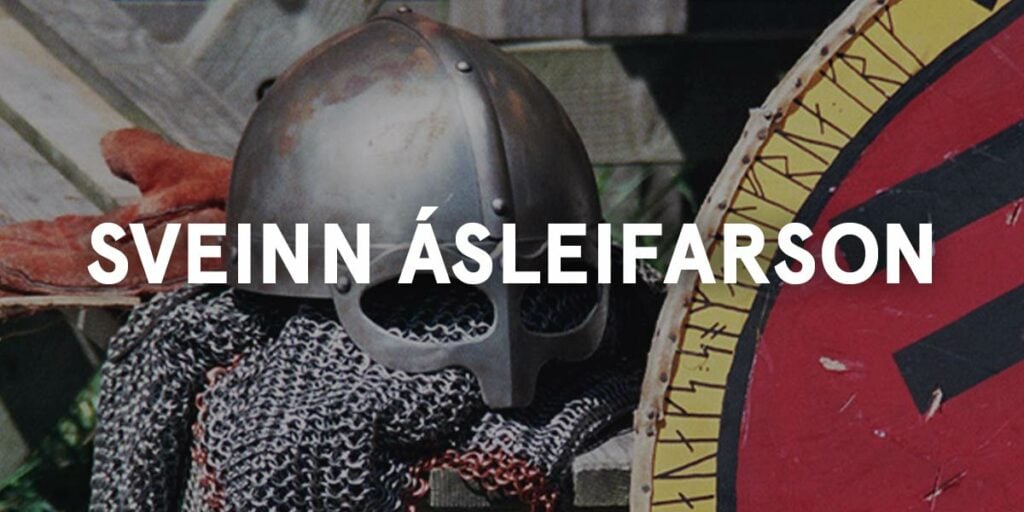
Sveinn can almost be described as the “quintessential Viking”; a spirited freebooter whose favorite activities included drunkenness, murder and plundering.
Doesn’t get much more Viking than that, does it?
To further cement his Viking-ness, Sveinn’s claim to fame was when he fought and murdered the Earl of Orkney’s cup-bearer over a drinking game gone awry.
Gorm the Old

Gorm is the ancestral head of the Danish monarchy, a rule he took by force when he claimed at least half of Denmark in 936.
On top of his battlefield success, Gorm also raised three sons — one of whom was Harald Bluetooth — to become “Vikings in the truest sense, departing Denmark each summer to raid and pillage” as Arild Huitfeldt describes it.
Asgeir
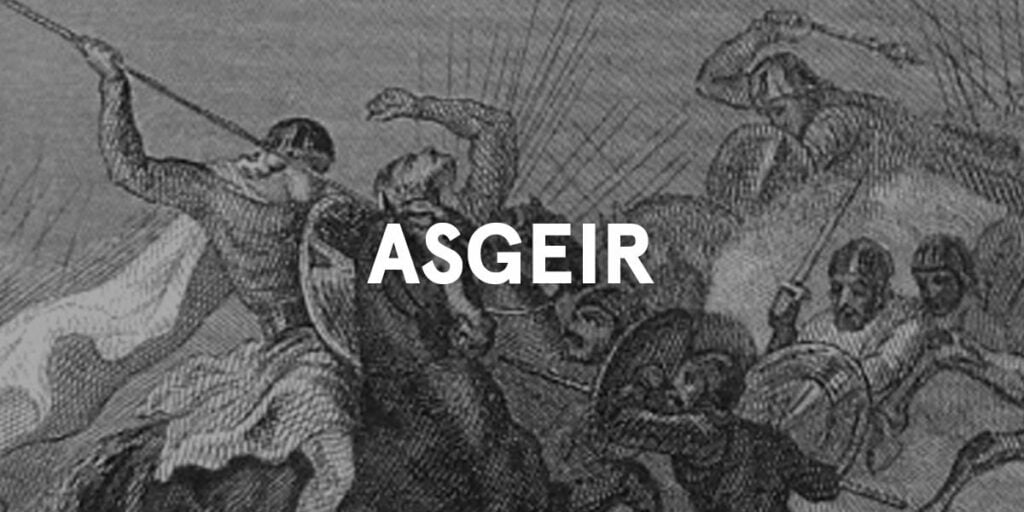
Asgeir raided in France (Rouen) in 841 CE, acting as inspiration for the famous siege of Paris (maybe headed by Ragnar Lothbrok, or possibly an unrelated Reginfred) in 845 CE.
So it would be fitting to call Asgeir the original Viking trailblazer, as his initiative would be followed by many a Norseman over the years to come.
Olaf Tryggvason
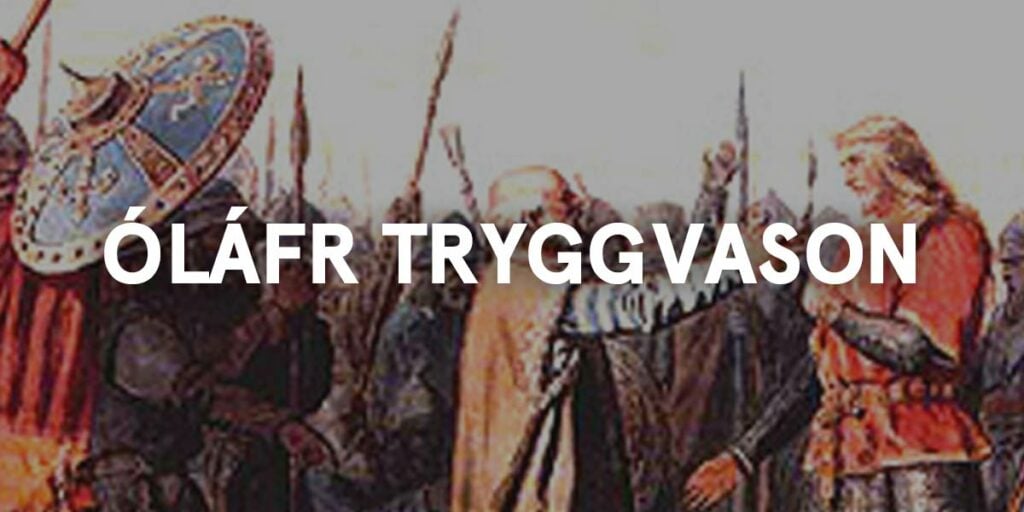
As the son of the recently murdered King of Viken (in Norway), Olaf had to flee to his mother’s native Sweden when he was only a few years old.
Eventually, his mother Astrid decided that they should travel to Gardarike (Kievan Rus) where her brother Sigurd was serving Vladimir the Great, but their ship was captured by Baltic Sea Vikings, and everyone on board were either killed or captured as slaves.
Olaf was sold to three different owners before his uncle Sigurd came to Estonia to collect taxes and suddenly noticed Olaf. After having bought his freedom, Sigurd finally brought Olaf to Gardarike as was Astrid’s original plan.
According to the sagas Olaf encountered one of his captors in Novgorod shortly thereafter, and apparently slew him on his own with an axe.
Olaf was made chief of Vladimir the Great’s men-at-arms, but Vladimir soon started to feel threatened by Olaf and pushed him to set out on a period filled with raiding the Baltic and North Seas, seducing a Wendland Queen, warring against Harald Bluetooth, and eventually ascending the throne of Norway.
Styrbjörn Starke

Nephew of the first recorded Swedish King Eric Segersäll, who feared his claim to the Swedish throne and thus sent Styrbjörn away to raid in the Baltic Sea (to keep him busy and more importantly out of Sweden).
Styrbjörn (or Björn as was his original name) set out with 60 ships and started living the Viking life, ending up as Chief of the Jomsvikings who were settled in and around Jomsborg in modern-day Poland.
He then proceeded to invade and defeat Harald Bluetooth, married his daughter, and convinced Harald to join him in his quest to claim the throne of Sweden from his uncle.
When Styrbjörn landed in Sweden he apparently ordered all of his ships burned, to signify that he was there to stay (and prevent his men from fleeing).
When the army started moving by foot instead, Harald Bluetooth quickly turned around his ships and abandoned Styrbjörn.
After a three day long battle against his uncle King Eric, Styrbjörn was slain and his army utterly defeated. He might not have trumped his uncle’s accomplishments, but he gave it a good go in the most badass Viking way possible.
Gunnar of Hlíðarendi Hamundarsson
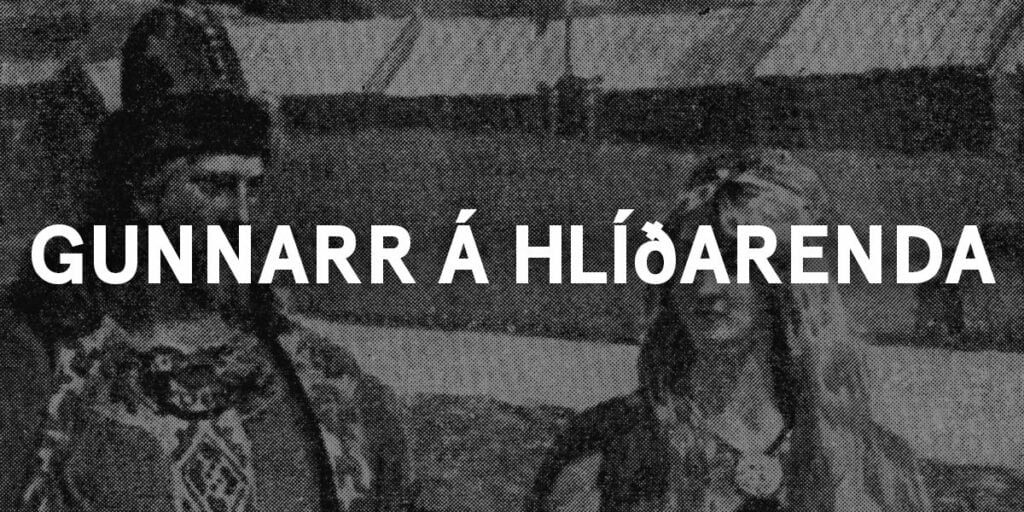
Gunnar of Hlíðarendi Hamundarsson was a Icelandic chieftan described as a handsome, notorious, and an almost god-like warrior.
Featured in two sagas where he is practically invincible in battle; Gunnar is known for being a refined archer, a specialist at close combat, a physical freak capable of jumping his own height with armor on, as good with his left hand as his right, and a master at wielding a unique halberd-style weapon called the atgeir (which he stole from a raid on an Estonian island).
On top of this Gunnar could apparently throw stones like no other, was a skilled swimmer, and simply could not be beat at any game whatsoever.
Being a true Viking, Gunnar also enjoyed drinking mead, making friends, and challenging himself intellectually. He was described as very loyal to his friends, full of good advice, polite, intelligent, and firm in his convictions.
Despite his prowess, Gunnar met his end during an attack on his home from vindictive family members seeking to avenge their kin (who Gunnar had slain). During the attack, Gunnar woke up and stabbed one of the men through a gap with his atgeir.
After being stabbed, the man apparently returned calmly to the others, who asked if there was anyone home. “Find that out for yourselves, but I am sure of, that his atgeir is home,” the man said, and then fell down dead.
Gunnar ultimately fell after being refused help by his wife to mend his broken bow. She refused because Gunnar had struck her earlier as a reaction to her stealing food from their neighbors during a famine.
Gardar Svavrsson
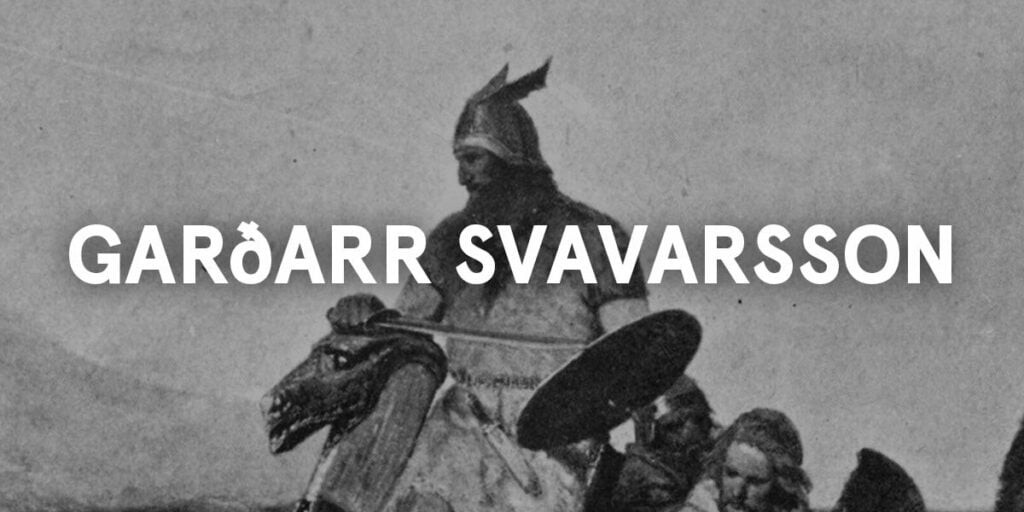
The second Viking to discover Iceland according to Landnámabók, which he did by chance after being blown off course outside Scotland around 860 CE.
He called it Gardarsholm – which did not catch on as it was later rebranded as Iceland (likely to stave off any opportunist vikings in search of land and riches).
Ubbe Ragnarsson
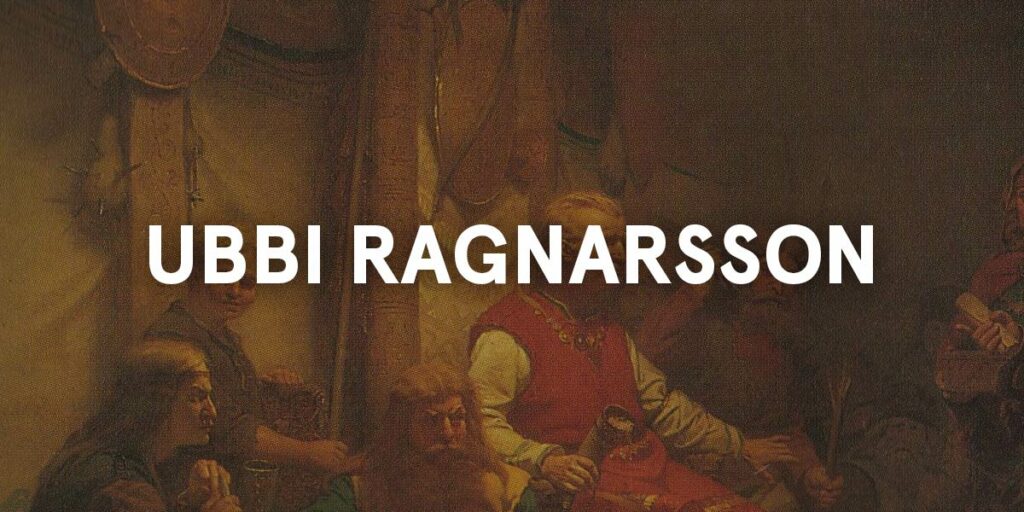
In 865 AD, Ubbe commanded the Great Heathen Army‘s epic invasion of England alongside his brother Ivar the Boneless. As one of Ragnar Lothbrok’s six sons, Ubbe sought to avenge his father’s death when he set sail for England with his brothers.
He led his men into battle against the Anglo-Saxons, in what is considered one of the most decisive events in Viking history. After defeating their enemies, Ubbe and his men settled in England, where he integrated into English society and fought alongside them in many battles.
He eventually ruled as King of East Anglia, and was considered a great leader of the Vikings in England.
Halfdan Ragnarsson

Halfdan was one of Ragnar Lothbrok’s six sons and was also called Hvitserk (“white shirt”). He was one of the commanders of the Great Heathen Army, and invaded England to avenge his father’s death.
Halfdan was the first Viking King of Northumbria (alongside his brother Ubbe who was King of East Anglia), and possibly also co-ruled Denmark with his brother Sigurd Snake-in-the-Eye later on.
Egil Skallagrimsson
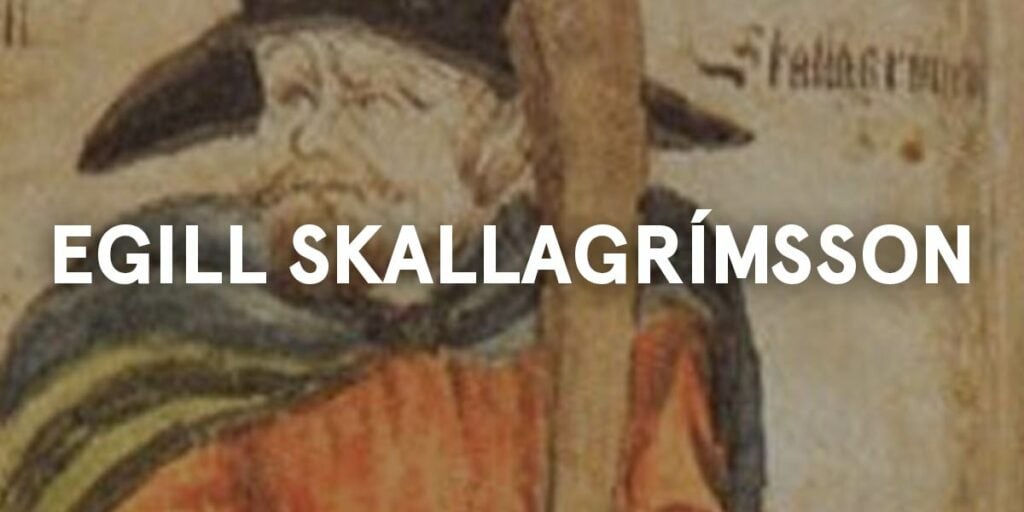
Egill was Iceland’s — and often also deemed Scandinavia’s — greatest skald (poet) and a mighty warrior to boot, if we are to believe the sagas (Egil’s Saga specifically).
Egil was described as a large and brawny Viking even as a youngster, and went on to become what historians call the greatest poet of his time.
The poems Egil wrote are seen as authentic, but the details about his life perhaps less so (they do seem a bit too… flattering in some respects).
In Egil’s Saga, he is described as such:
thick-necked was he, and big-shouldered beyond other men, hard-featured, and grim when angry
Egil’s Saga, ch. 55
Sigurd Snake-in-the-Eye
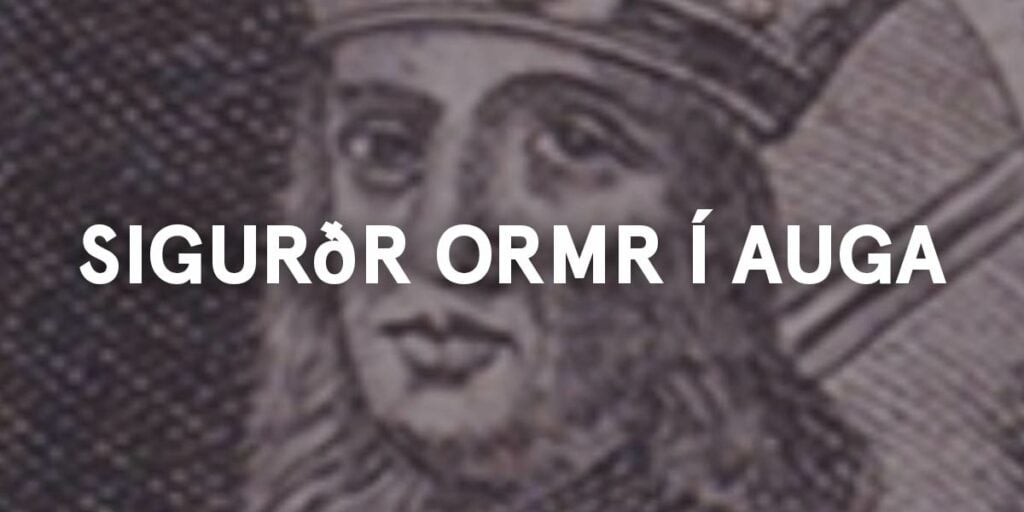
Sigurd was according to semi-mythical sources the son of Ragnar Lodbrok, and is one of the most enigmatic and complex characters in Viking mythology. His nickname Snake-in-the-Eye came from being supposedly born with a mark in his eye, described as the image of a snake biting its own tail.
Sigurd inherited Zealand, Scania, Halland, the Danish islands, and Viken when Ragnar Lothbrok died in Aella of Northumbria‘s snake pit in Northrumbria, and likely ruled Denmark along with his brother Halfdan up until Halfdan’s death in the Irish Sea in 877.
There are some sources that allude to a direct lineage between Sigurd and the aforementioned King Cnut the Great.
Sigurd is best known for taking part in the Great Heathen Army‘s invasion of England in 865, intended to avenge the death of his father Ragnar Lodbrok.
Rognvald "the Møre-Earl" Eysteinsson
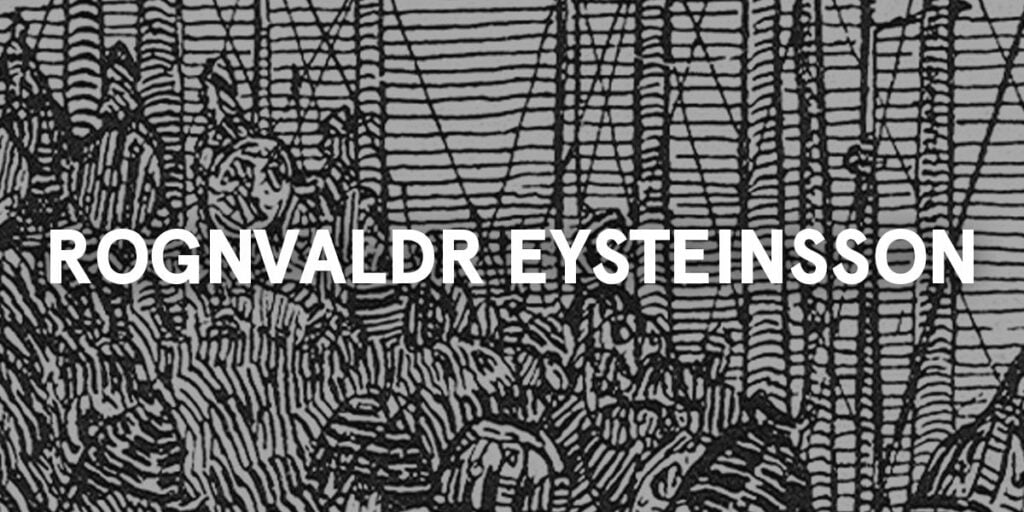
Also known as “the Wise” and “the Powerful”, Rognvald “the Møre-Earl” Eysteinsson supposedly lead an epic Norwegian expedition to defeat rebel Vikings in Orkney and Shetland islands, before launching their own raids upon Scotland, Ireland, and the Isle of Man.
The extent of this expedition is up for debate, but Rognvald is identified as the founder of the earldom of Orkney.
Guthrum
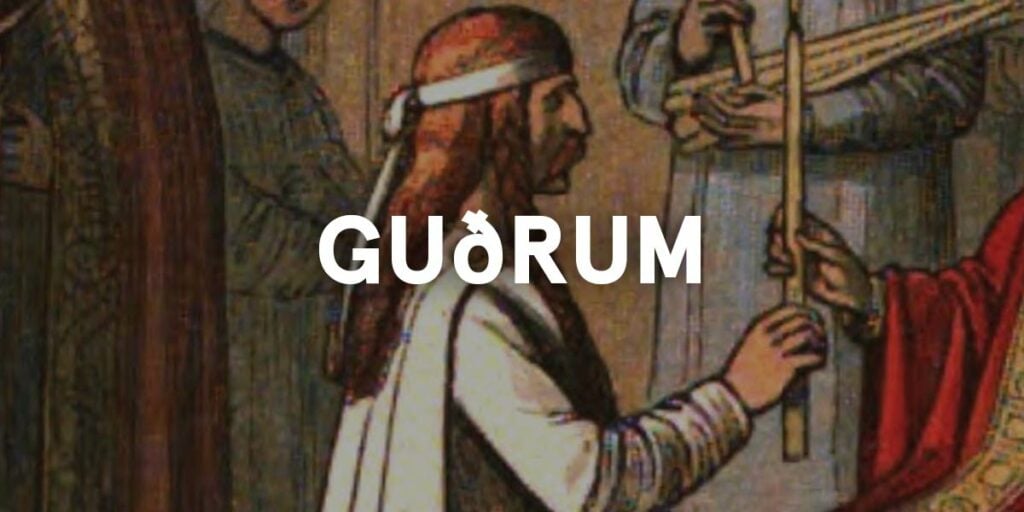
Guthrum was a younger relative of the Danish king Horik II who ruled from 854 until an unknown date in the 860s–870s.
After having failed in his campaign to become King of the Danes (and lost to his relative Horik), Guthrum became one of the commanders of the “Great Summer Army” that reinforced the “Great Heathen Army” that was based around Reading in 871 (and commanded by Halfdan, son of Ragnar Lodbrok).
After attacking the West Saxons multiple times the army finally wintered in London between 871–872, before going north to quell a revolt in Northumbria.
The army went on to conquer Mercia in 874, after which it was split in two with Halfdan taking one half to fight against Picts and Britons around Strathclyde, and Guthrum leading the other half south to continue fighting the West Saxons (Wessex).
In 878 Guthrum led a surprise attack at night against King Alfred of Wessex, who was forced to flee to the marshes of Somerset. Ultimately Alfred gathered his men and defeated Guthrum at the Battle of Edington, which led to Guthrum converting to the Christian faith as a vassal king of East Anglia, where he continued to rule over both Norse and Saxons for a decade or so, in peace.
Freydis Erikdottir
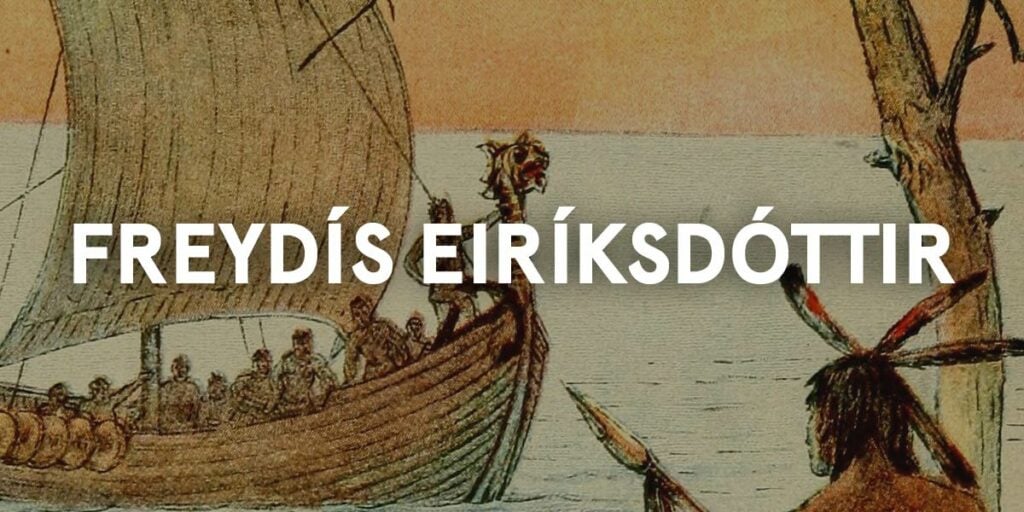
Freydis was the sister of Leif Eriksson, and was either an epic Viking warrior who single-handedly repelled a horde of natives in Vinland (also known as North America), or a deceiving explorer who murdered her adversaries’ wives with an axe when her soldiers refused to — depending on which sources you want to trust.
Either way, Freydis had a lot of influence on her brother’s journeys to North America, and was likely instrumental in their (at least short-term) success.
She is featured in the Saga of the Greenlanders and the Saga of Erik the Red.
Sources:
https://sagadb.org/brennu-njals_saga.en
https://sagadb.org/egils_saga.is
https://litteraturbanken.se/presentationer/specialomraden/ErikDenRodesSaga.html
https://www.nature.com/articles/s41586-021-03972-8
https://archive.org/details/storyofunitedsta00marsrich/page/6/mode/2up?view=theater
https://www.snerpa.is/net/isl/gunnars.htm
https://www.snerpa.is/net/isl/graent.htm
https://www.snerpa.is/net/isl/eirik.htm
https://www.snerpa.is/net/forn/ragnar.htm
https://archive.org/details/ninebooksofdanis02saxouoft/page/541
https://www.britannica.com/biography/Vladimir-I
Show more +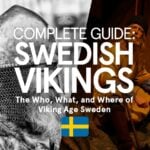 Swedish Vikings: A Guide To Viking Age Swedes & Their Journeys
Swedish Vikings: A Guide To Viking Age Swedes & Their Journeys 12 Interesting Answers About the ‘Vikings’ TV Series + Timeline
12 Interesting Answers About the ‘Vikings’ TV Series + Timeline How Tall & Strong Were Vikings? (Based on DNA & Archeology)
How Tall & Strong Were Vikings? (Based on DNA & Archeology)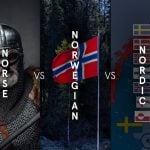 Norse vs. Norwegian vs. Nordic: Differences Explained
Norse vs. Norwegian vs. Nordic: Differences Explained

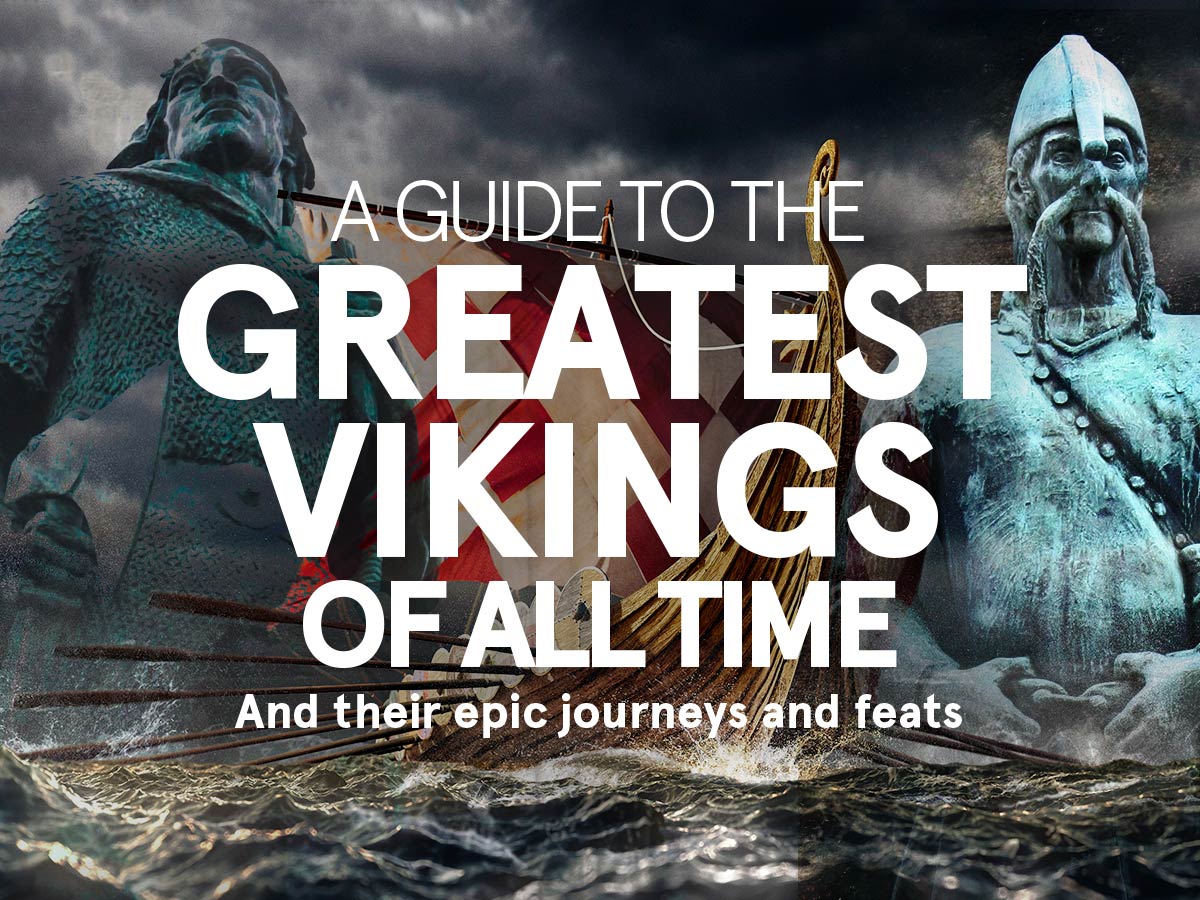

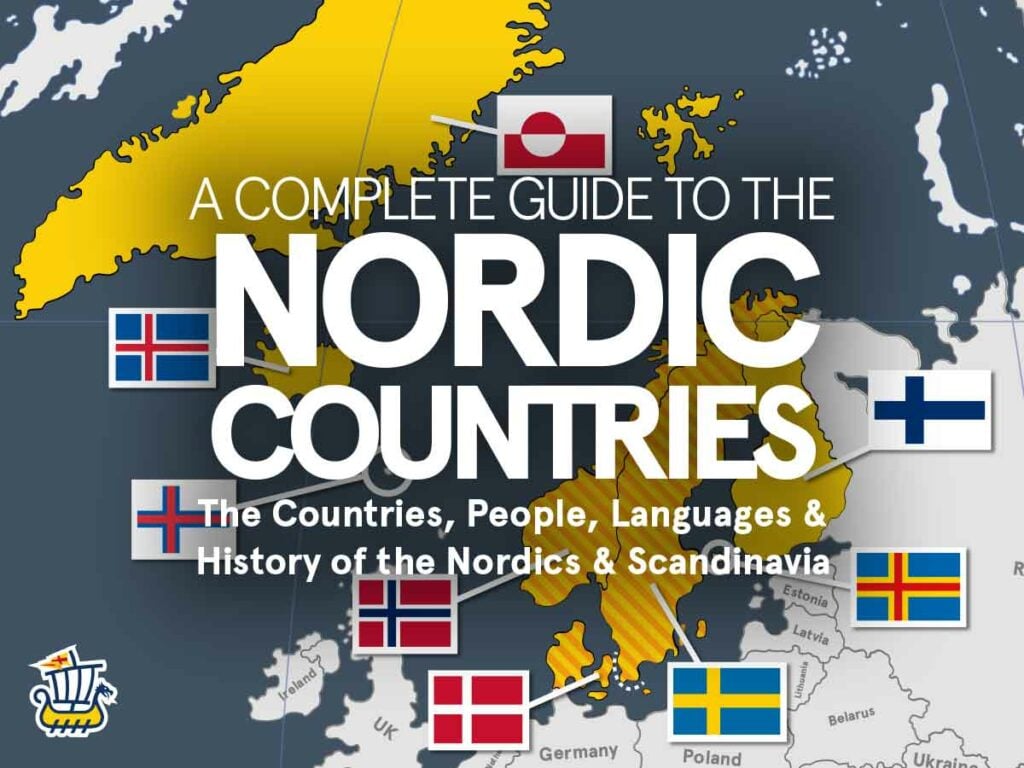


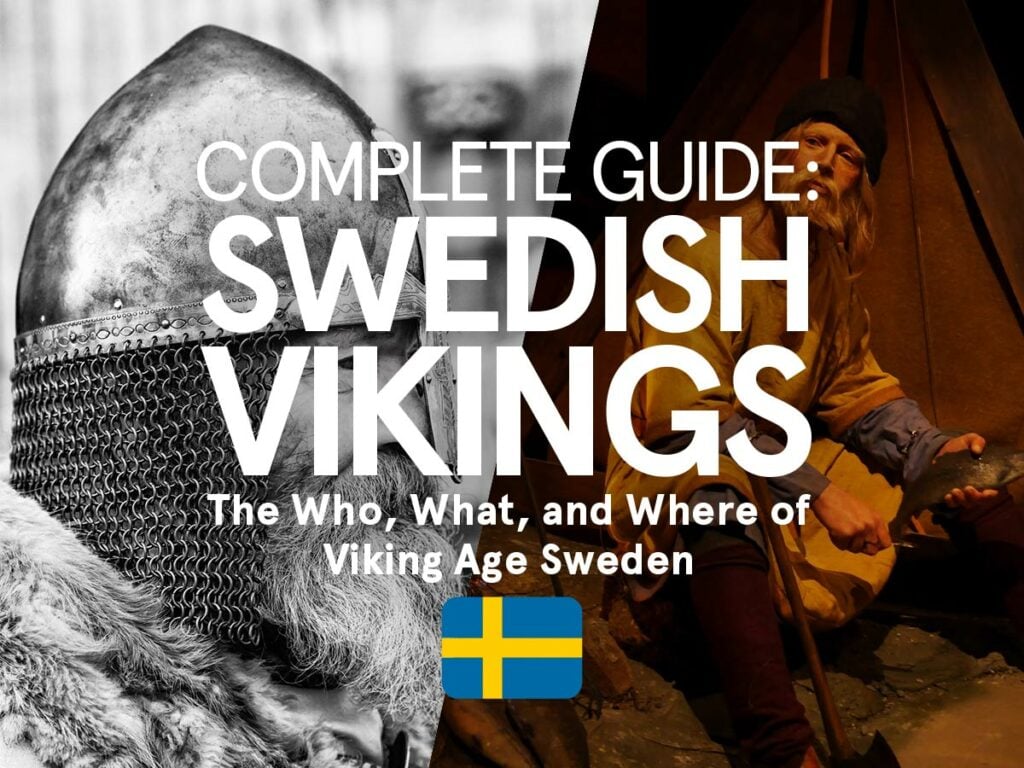
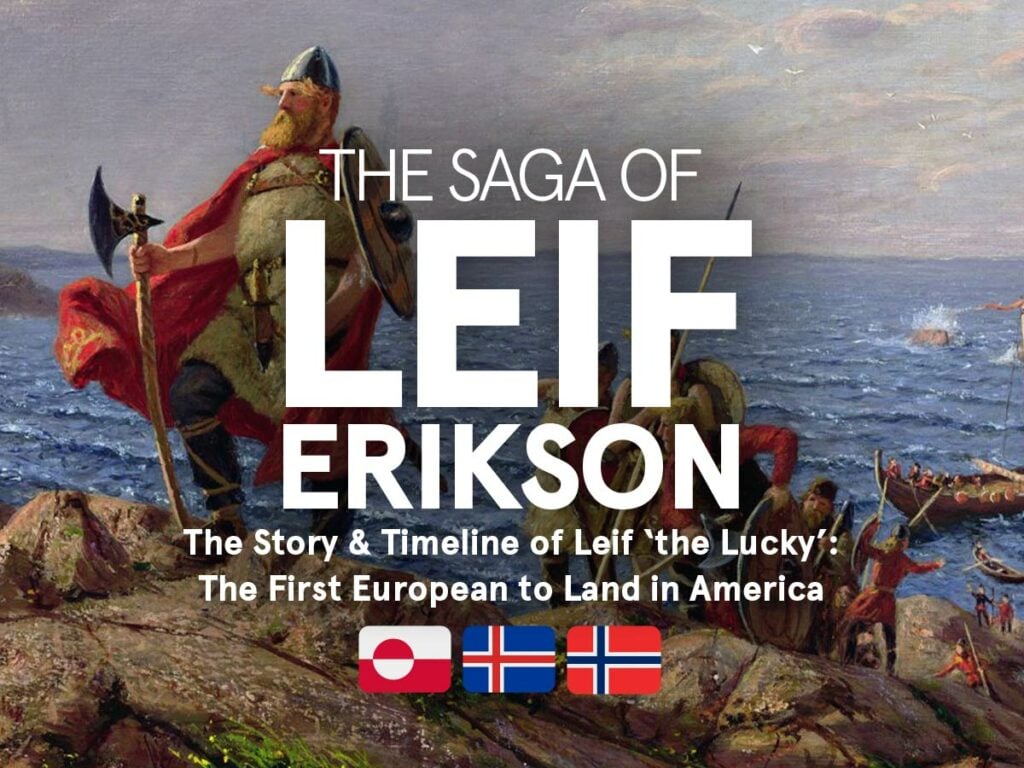
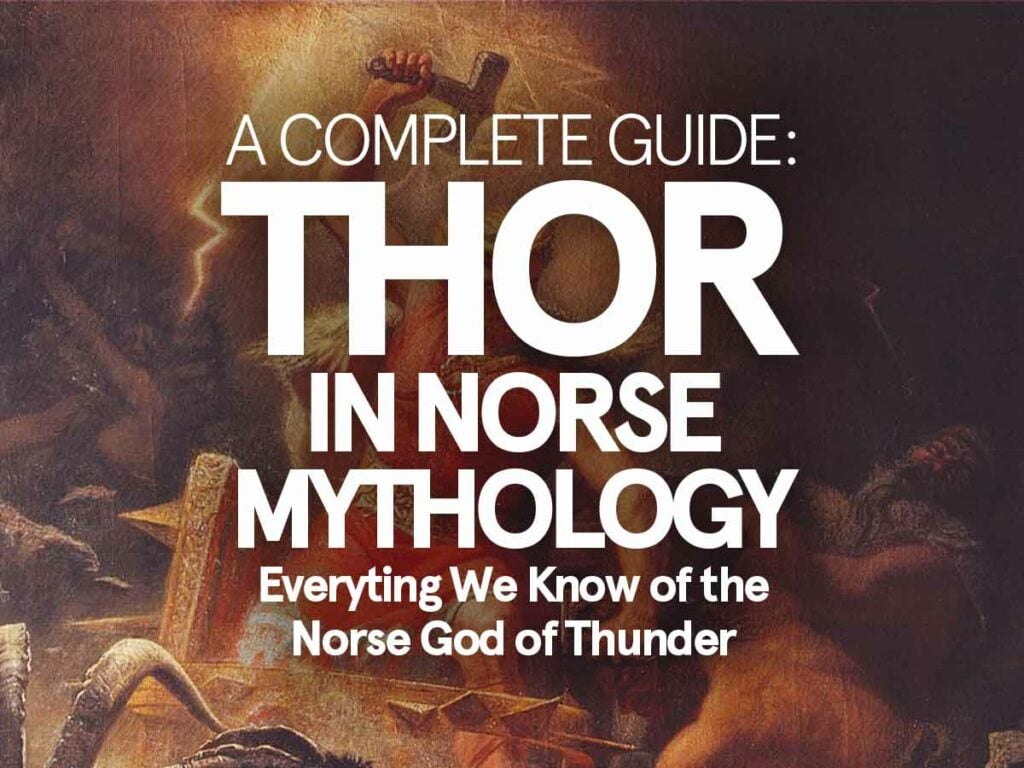
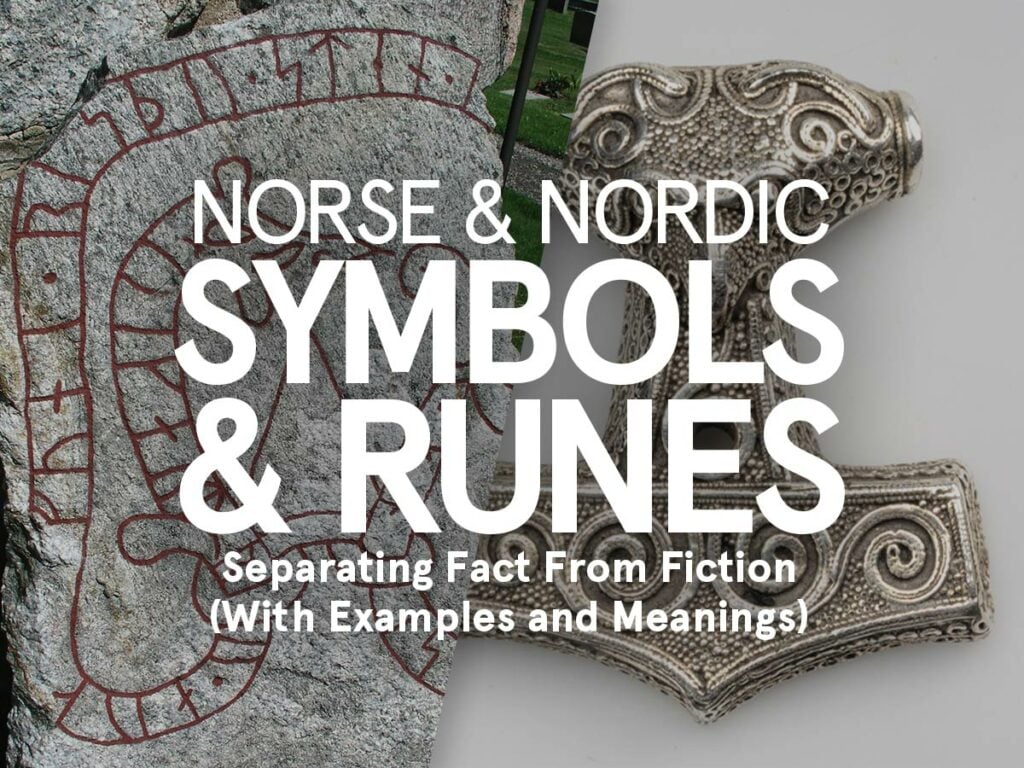

Hello Mr. Anderson,
Great research, enjoyed it. My family is Clan Donald and I’m wondering if you have any info on our Viking heritage which goes back to Ingiald, “Ill-Ruler”, and Olaf, “Tree-Hewer”, in 7th Century Sweden & Norway.
I would appreciate it very much if you do. With elders, time isn’t on my side you know, and there’s a special lady who deserves to know all I can find out about her roots…my mother in law. She’s lived with the heartache for almost 60yrs now of never knowing who murdered her mother & sister in Butte, Montana 1965. Knowing it more likely remain this way, I am trying to bring her some joy by doing her family genealogy which of course is my husband’s, three sons and extended family too. This may be our last Christmas together considering her age so I’m doing all I can, putting all my time & effort into this for her and her two surviving sisters.
Unfortunately I’m unable to travel to Sweden or Ireland to research so I must depend on kind humans abroad to fulfill this gift for her/them. If obliged, even if you don’t have any research can you be so kind to spare a few seconds to tell me? I’d appreciate it so I can reach out to others in your area.
Thank you for taking the time to read this.
Good day.
Hello Sherry!
Thank you for sharing your story and I appreciate your commitment to uncovering your family’s Norse heritage. Clan Donald indeed traces its lineage back to notable Norse figures such as Ingiald Illråde (“Ill-Ruler”) and Olaf Trätälja (also called “Woodwhittler”), both semi-legendary rulers in 7th-century Sweden and Norway featured in the Old Norse sagas (the Prose Edda primarily).
Clan Donald, or Clan MacDonald, descends from Norse-Gaelic roots, primarily through Somerled, a 12th-century warlord with Norse ancestry. Historical sources, such as the Norse sagas and genealogical records, suggest that Somerled’s lineage connects back to early Norse rulers in Scotland.
Clan Donald’s Norse-Gaelic heritage reflects the Viking settlement and integration into the Scottish Isles during the Viking Age. Archaeological findings, such as runestones and artifacts from Viking settlements in Scotland, provide evidence of this mixed Norse-Gaelic identity (Woolf, 2007).
The Norse heritage within Clan Donald is evident in the clan’s traditional symbols, place names, and even linguistic traces found in the Gaelic spoken in the Hebrides. Studies, including those by historical researchers like Barbara Crawford, further highlight the Norse influence on Scottish clans through intermarriage and cultural exchange (Crawford, 1987).
For further exploration, you might consider examining the Prose Edda or engaging with genealogical societies linked to Clan Donald that specialize in Norse heritage. Your dedication to preserving this history strikes me as a fitting and meaningful tribute to your family.
Best,
–Karl